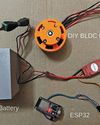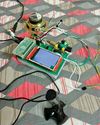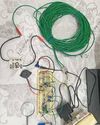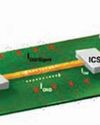
Ordering a single piece of PCB from a manufacturer can be quite costly, especially when, for the same price, multiple PCBs could be manufactured and assembled. This is a common mistake made during initial product prototyping. Focusing solely on circuit design and being unaware of PCB panelisation, this error often goes unnoticed until later. Even for those familiar with panelisation, it is possible to produce 3 to 4 more units at the same production cost by making slight adjustments to the panel design.
This article is intended for those new to the process, who may be overpaying for PCB manufacturing. Here are some key insights gained during the process of PCB and product design, highlighting ways to save costs in both prototyping and final product manufacturing.
Prototyping your PCB design
In the prototyping phase, it is common to have two or more designs that require testing for reliability and functionality. Choosing the single PCB method for each design can be costly, especially as most manufacturers require a minimum order of 5-10 units. Often, only one or two units are needed for testing during the prototyping phase, which can lead to unnecessary expenses during initial prototyping.
Panelised manufacturing can significantly reduce costs when prototyping multiple designs.
Panelising different designs. When testing multiple PCB designs during prototyping, paying for their separate manufacturing costs is unnecessary. By placing multiple designs (3-4) on a single panel, only one PCB cost is incurred, allowing the production of all designs for prototyping. This, however, depends on the PCB vendor. But most vendors allow this practice, charging for a single panel while accommodating multiple designs, thus reducing both PCB and SMT costs.
この記事は Electronics For You の September 2024 版に掲載されています。
7 日間の Magzter GOLD 無料トライアルを開始して、何千もの厳選されたプレミアム ストーリー、9,000 以上の雑誌や新聞にアクセスしてください。
すでに購読者です ? サインイン
この記事は Electronics For You の September 2024 版に掲載されています。
7 日間の Magzter GOLD 無料トライアルを開始して、何千もの厳選されたプレミアム ストーリー、9,000 以上の雑誌や新聞にアクセスしてください。
すでに購読者です? サインイン

ESP32-Powered AUDIO-VISUAL SIREN
This sound alternator is designed to simulate the effects of a police siren, combining sound and light to create a dynamic audio-visual experience.

BLDC MOTOR With Web-Based Speed Control Using ESP32
Integrating wireless control into brushless direct current (BLDC) motor systems opens up exciting possibilities for applications such as remote-controlled cars, robots, and other innovative systems.

Pi Zero Portable BILINGUAL TRANSLATOR
This system is designed as a bilingual translator, leveraging the gTTS library to support multiple Indian languages, including English (en), Bengali (bn), Gujarati (gu), Hindi (hi), Kannada (kn), Malayalam (ml), Marathi (mr), Tamil (ta), Telugu (te), and Urdu (ur).

Op-Amp-Based VEHICLE THEFT DETECTOR
A simple, low-cost device can effectively alert homeowners or occupants if a parked vehicle is moved or tampered with.

loT SMART METER With Dashboard
Energy meters in homes track electricity usage, enabling accurate billing by governments and providers.

Choose The Right Cloud Platform For Implementing loT PROTOCOLS
Working with loT protocols like MQTT, AMQP, and CoAP on cloud platforms is essential for developing scalable and efficient lol applications. The choice of the programming platform will depend on factors like project requirements, existing skills, and target devices. Leveraging the appropriate libraries and cloud services can enable seamless integration of lol devices with cloud-based applications.

Why TMR SENSORS Lead Next-Generation Design
TMR sensors are gaining traction in industries needing precision and power efficiency. What makes them the go-to choice for modern designs?

DESIGNING PCBs For EMI Management
Electromagnetic interference can derail your PCB’s performance. EMI management is not just a technical necessity but a hallmark of exceptional PCB design.

CUTTING COSTS, NOT CORNERS: Building Large Scale Applications With Open Source Software
Here are some strategies and best practices for leveraging open source to create enterprise-grade web and mobile applications without sacrificing quality or functionality.

"We Are One Of India's Very Few State Bodies To Manage The Entire Lifecycle Of The Electronics EcosystemFrom Approvals To Subsidies."
What is Gujarat State Electronics Mission GSEM), and how is it attracting major investments in electronics manufacturing, particularly semiconductor manufacturing, to Gujarat? To delve deeper, Electronics For You’s Nijhum Rudra spoke with Manish Gurwani, the head of GSEM. Here is what he revealed...